LinkedIn Ads
By Alex Carter on September 25, 2024
LinkedIn has over 1 billion members all around the world. It’s among the best platforms for marketing. It connects tons of people who might influence your business decisions.
The best way to approach promotion here is through LinkedIn ads. We will tell you more about the ad formats you can use and how to set up an effective campaign on this platform. So, keep reading!
LinkedIn Ad Types
LinkedIn offers many ad formats for different purposes. The right type can help you build brand awareness and get more conversions. We gathered the main ones you can use below.
Sponsored Content
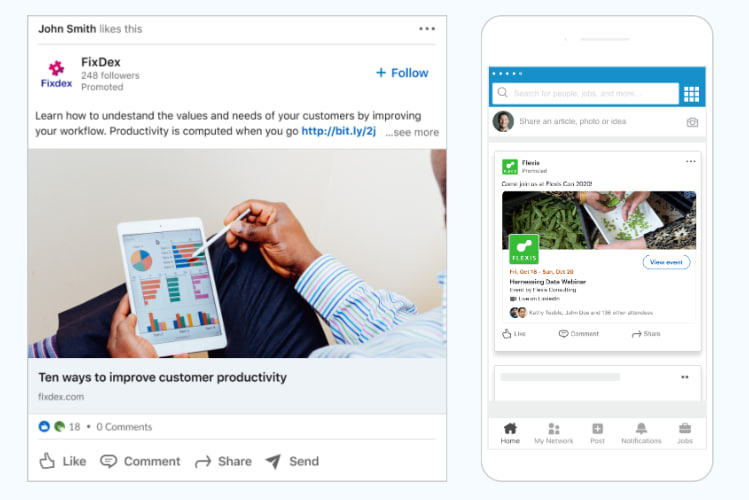
These are native ads that appear directly in users’ feeds. They perfectly blend with organic content. This format usually includes
- Single-images;
- Carousels;
- Videos;
- Events, etc.
It is ideal for storytelling and increasing engagement. You can use this type to promote blog posts or product updates. It’s a universal tool for educating and finding potential customers.
Plus, you might use the advanced targeting options. They allow you to reach a specific audience, depending on their job title or industry.
Sponsored Messaging
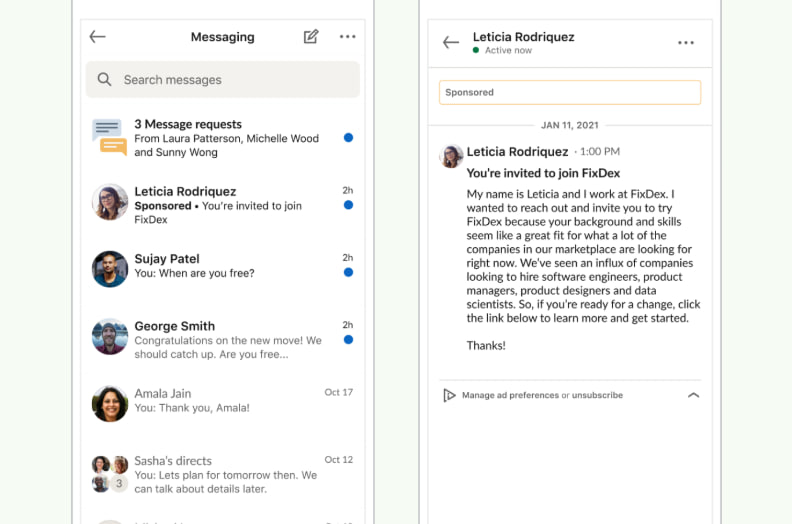
This format delivers individualized messages straight to people’s inboxes. It concentrates on direct engagement. So, it’s very useful for lead generation and event promotions.
Sponsored Messaging allows you to incorporate a clear CTA in your copy. For example, you can prompt people to download a whitepaper or register for a webinar.
Here you might also use targeting to reach more influential users. It boosts the chances of meaningful interactions.
Text Ads
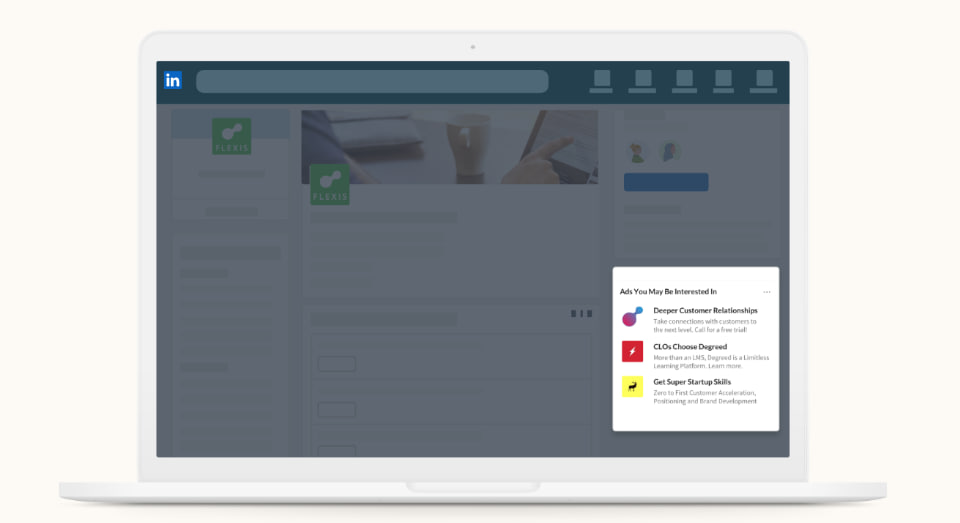
These are small and cost-effective ads people see on the sidebar. They feature
- Short headline;
- Brief description;
- Optional image.
This format works well when you want to bring traffic to landing pages or promote simple offers. You can also use it to test different messaging strategies before moving to major promotions.
Plus, you can control your budget better with these ads. They work on a pay-per-click or pay-per-impression pricing model.
Lead Gen Forms
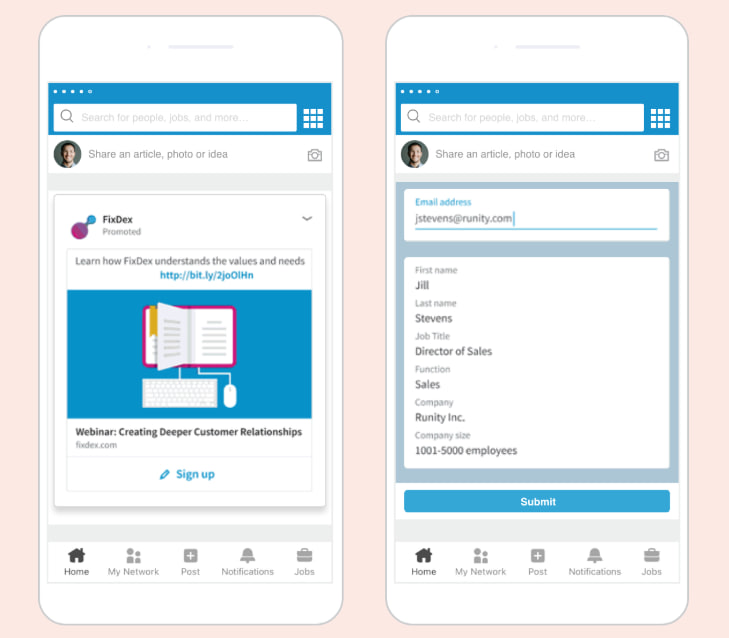
This type can help you facilitate the lead capture process. It lets users submit their contact information without leaving LinkedIn. It is especially beneficial when you’re concentrating on B2B lead generation.
The forms are pre-filled with LinkedIn profile data. So, people can complete them with minimal effort.
Plus, you can integrate Lead Gen Forms with your CRM systems. It simplifies follow-ups and nurturing campaigns.
Video Promotions
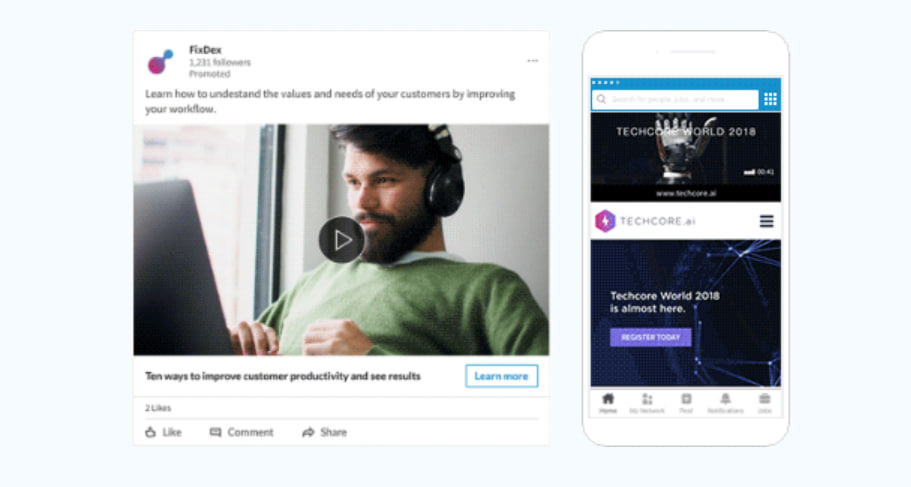
Video content usually performs well because it captures attention faster and explains complex ideas better. You can use this format to
- Showcase products;
- Share customer reviews;
- Present tutorials, and more.
You can educate users and make your brand recognizable with its help.
It’s extremely important to analyze engagement metrics, especially if you work with e-commerce monitoring. That way, you can adjust your strategies for more conversions.
Main Goals of LinkedIn Advertising
LinkedIn is a strong marketing tool for any brand. It focuses mostly on business-oriented content. This sets it apart from other social media platforms.
What are the main objectives of this sort of advertising?
Brand Awareness
Higher brand awareness is the first goal you can accomplish with its help. You can set yourself as a leader by demonstrating your mission and services through promotion.
Sponsored content we highlighted helps you stay visible among potential customers and partners.
Lead Generation
LinkedIn is a great platform for generating quality leads. It’s especially beneficial for B2B companies. The Lead Gen Forms it offers simplify the process of collecting user info.
You can create persuasive materials and offers to attract prospects. It often encourages them to share their contact details.
Website Traffic
Driving traffic to your website or landing page is another key objective. LinkedIn ads can direct people to
- Blog posts;
- Product pages;
- Signup forms, etc.
Good CTA buttons in sponsored posts and InMail messages improve click-through rates.
Talent Recruitment
LinkedIn also plays a huge role in talent acquisition. You can use recruitment-focused ads to draw qualified candidates for job openings. These campaigns target professionals based on their skills and job interests. So, you can connect with the right talent.
ABM
This platform is perfect for ABM strategies as well. It allows you to target specific companies or industries. This helps in building relationships with high-value prospects. So, there’s a higher possibility of closing significant deals.
Event Promotion
You can use LinkedIn ads to promote different events, like
- Webinars;
- Conferences;
- Networking events, etc.
Targeted campaigns ensure that invitations reach the right audience. It boosts registrations and results in more participation from industry professionals.
How to Set Up an Ad Campaign on LinkedIn?
You already know how beneficial LinkedIn ads can be. This platform offers many formats of promotion for different initiatives. Now, you’re probably wondering how to start a campaign here.
Here are the steps for you to follow.
Create a Campaign Manager Account
You need access to LinkedIn Campaign Manager to start running campaigns. Go to the manager page if you don’t already have an account. You can sign in with your current profile or create a new one.
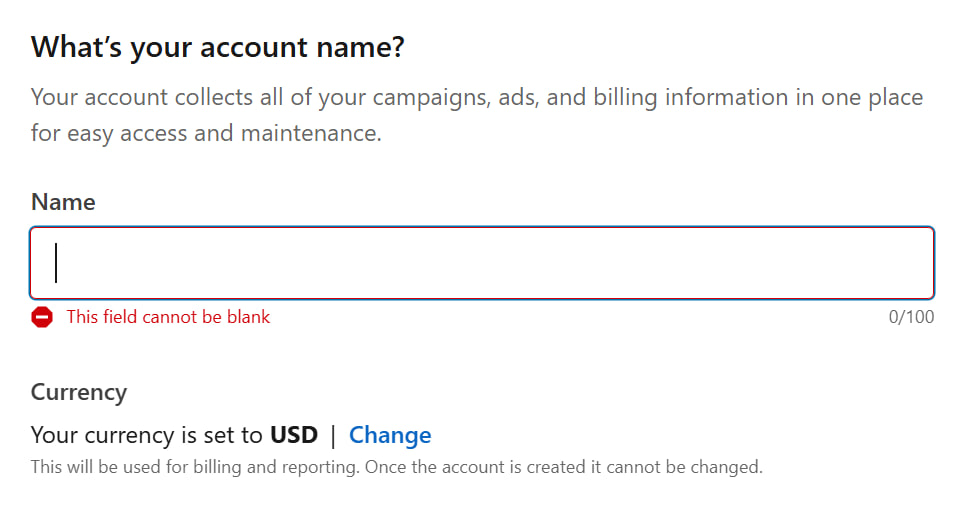
Then, create a new ad account by entering details like your
- Business name;
- Currency;
- LinkedIn Page (optional but recommended).
You’ll see a dashboard after you sign up. Here you can manage multiple campaigns and track performance.
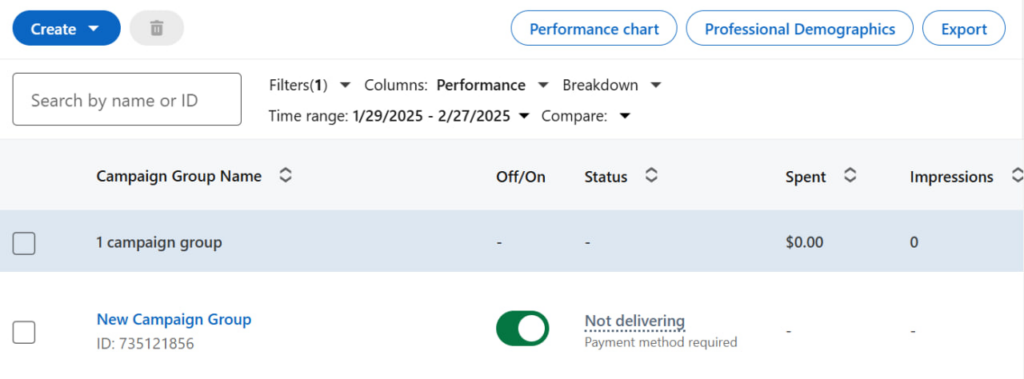
We recommend connecting your page to your ad account to improve credibility and allow for engagement with your ads.
Pick an Objective
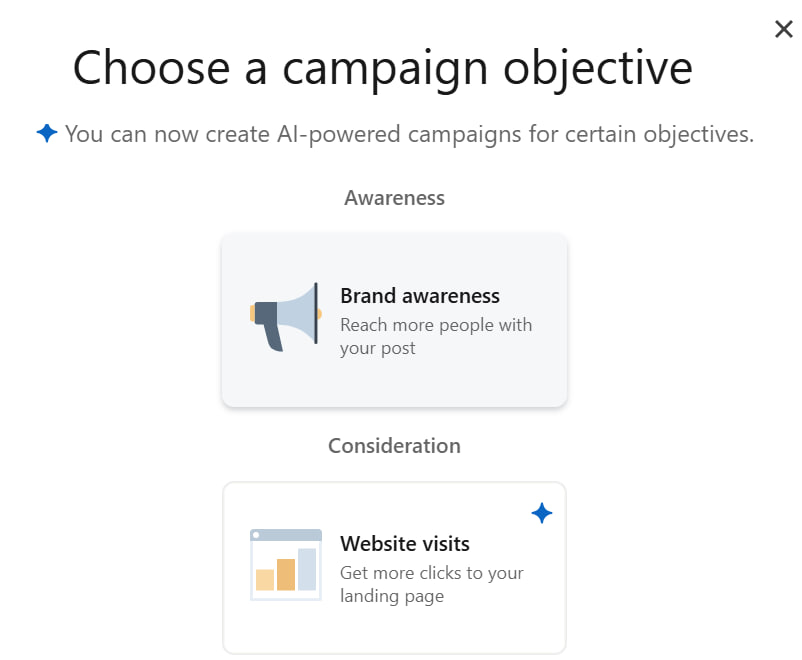
Your campaign objective determines how LinkedIn optimizes your ads. It also defines which KPIs you should track. The main categories this platform offers are
- Brand awareness;
- Website visits;
- Engagement;
- Video views;
- Lead generation;
- Talent leads;
- Job applicants.
So, clearly evaluate what you want to achieve and pick the most suitable category.
Then you can decide between two options – Accelerate and Classic.

Define Your Target Audience
LinkedIn offers advanced targeting options. It allows you to reach highly relevant audiences.
You can adjust the settings based on these criteria:
- Location (country, city, or region);
- Company Details (industry, name, size);
- Job Experience (title, function, seniority level);
- Education (degree, field of study, school);
- Interests & Traits (skills, groups joined, personal interests)
- Demographics.
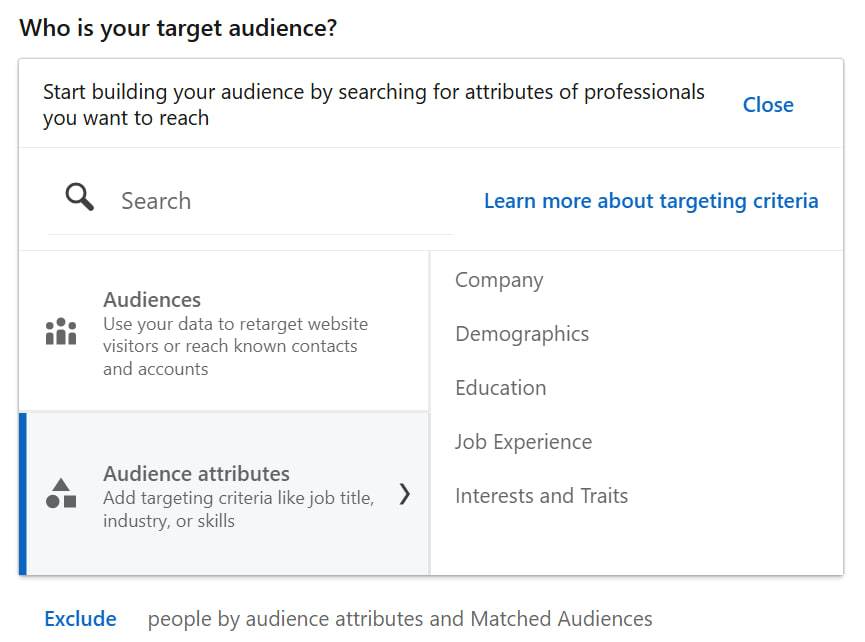
Plus, you can use Matched Audiences to retarget website visitors or upload email lists for custom targeting.
Decide on the Format
Your next step is to pick a format for your promotion. We described some of the main types this platform offers above.
You can do it in the form of
- Single image;
- Carousel image;
- Video;
- Follower;
- Document;
- Conversation;
- Event;
- Article or newsletter.
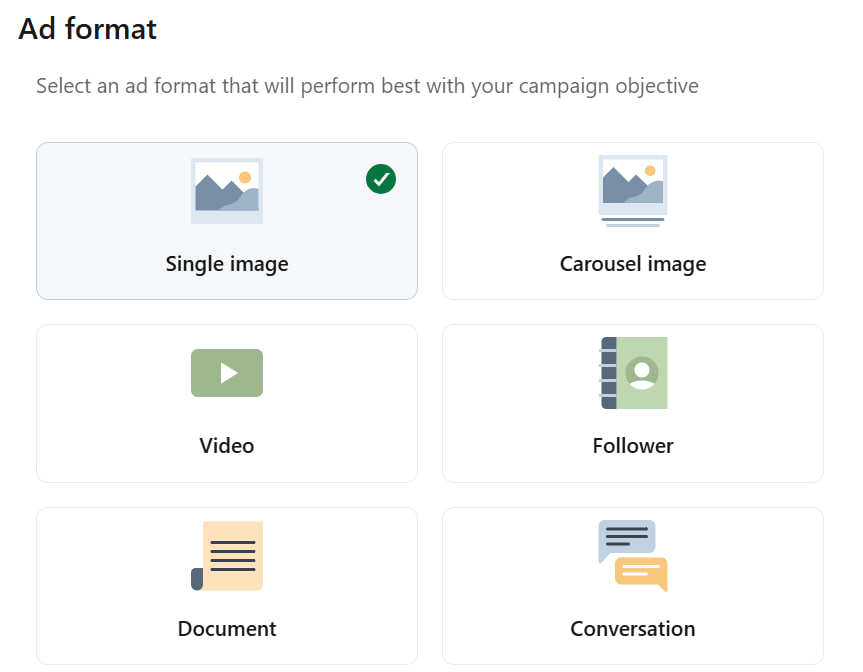
We suggest you start with Sponsored Content for your first campaign. It provides the best reach and engagement.
Set the Budget and Schedule

LinkedIn Ads operates on an auction-based system. Technically, you bid against other advertisers for placements.
You can pick between:
- Daily budget;
- Lifetime budget;
- Combination of these two.
Then set the dates for your campaign and pick a bidding strategy. It suggests options based on the objective you defined earlier.

Create your Ad
You’re done with all the essential settings. It’s finally time to design your ad.
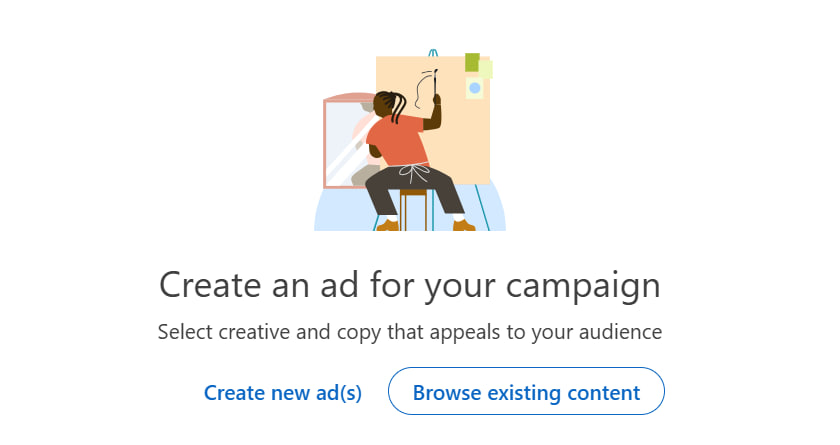
You need to pick a name for it and write an introductory text. Keep it clear and short. Your message should be under 150 characters for Sponsored Content.
Highlight the benefits of your offerings instead of just describing them. Also, make sure to come up with a persuasive CTA.
Next, add quality visuals considering these points:
- Images should be high resolution (1200×627 pixels minimum);
- Videos should be 15-30 seconds long with subtitles;
- Carousel ads should tell a story on multiple slides.
Plus, we recommend you use A/B testing to compare different versions of your ad and see which performs best.
Launch and Monitor
The last step is to launch your campaign. Remember that you need to track its performance regularly. Pay attention to the following metrics:
- CTRs;
- Engagements;
- Conversions;
- Cost per Lead.
Also, try to optimize your campaign after some time for better results. Exclude unengaged audiences and increase bids if your ad isn’t reaching enough people. Try different copies and visuals to find the most effective one.
Conclusion
LinkedIn is a strong platform for professional advertising. It connects specialists from different industries all around the world. It opens up many possibilities, so you need to approach it smartly.
Clearly define the objective of your campaign when using LinkedIn Ads. Pick the most suitable format that will give you relevant results. Analyze your clientele and create a unique ad copy to catch their attention.
Hope that our guide was helpful! Follow the steps we outlined and reach your promotion goals.
Posted in blog, Web Applications
Alex Carter
Alex Carter is a cybersecurity enthusiast and tech writer with a passion for online privacy, website performance, and digital security. With years of experience in web monitoring and threat prevention, Alex simplifies complex topics to help businesses and developers safeguard their online presence. When not exploring the latest in cybersecurity, Alex enjoys testing new tech tools and sharing insights on best practices for a secure web.
